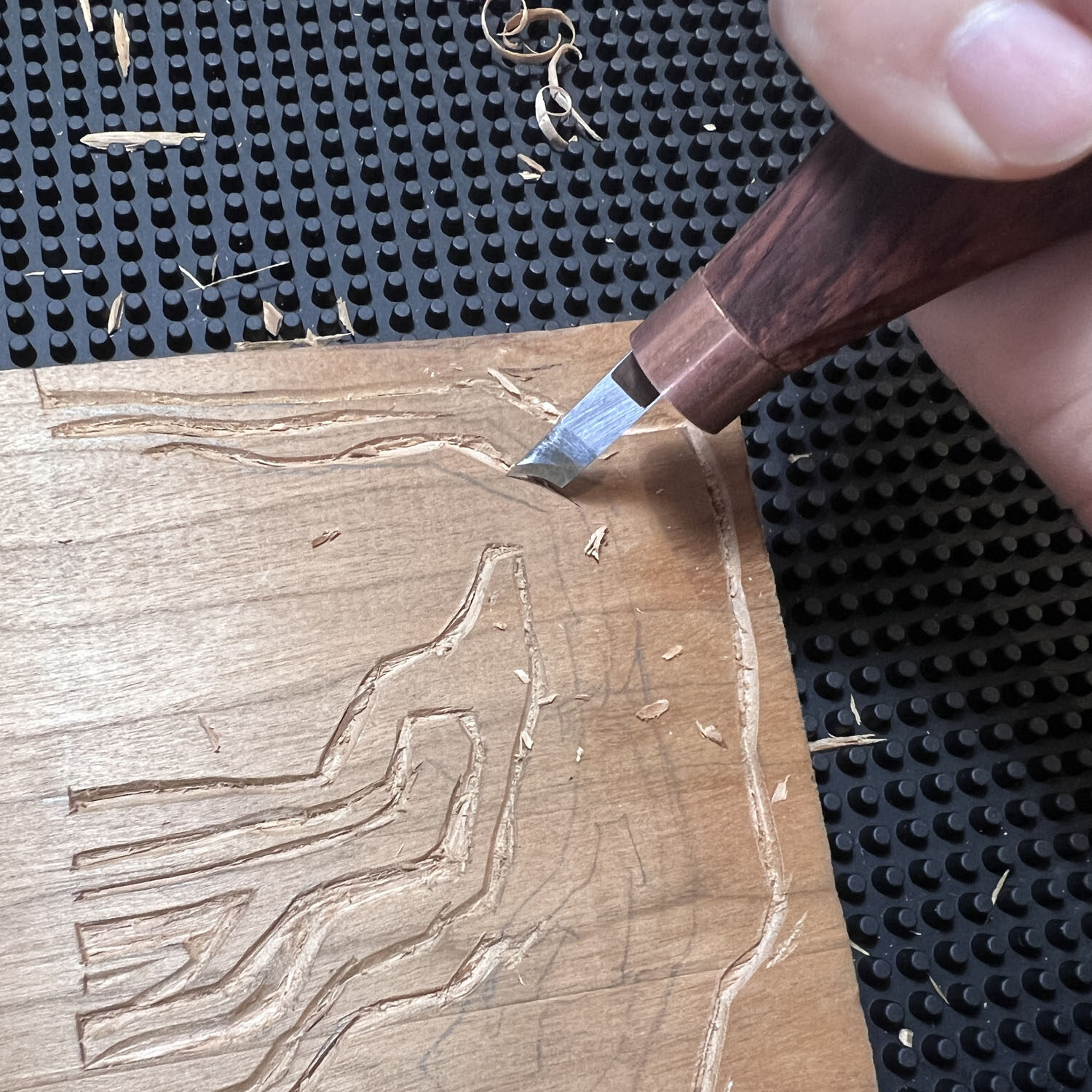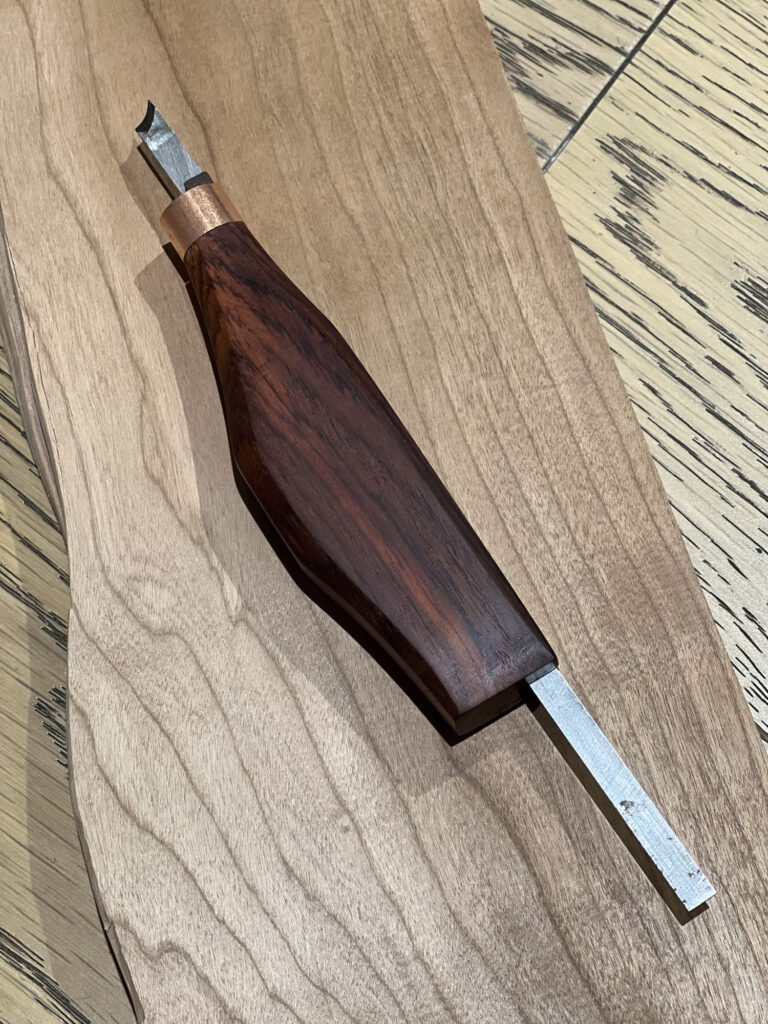
Traditionally, Chinese water-based woodblock printmaking uses pearwood; however, it is not readily available in Canada. At a local wood store, I discovered alternatives like cherry, maple, ash, and basswood. The cherrywood I purchased was a long, one-inch-thick solid plank, while other panels labelled “hobby board” are much thinner, about 1/4 inch thick. I’ve seen artists use plywood for woodblock printing and have tried it myself, but I dislike how the carving blade interacts with the layers of plywood. Therefore, I plan to use solid wood mainly this time. Basswood is very soft and easy to carve, but I worry it may bend too much when exposed to moisture. Also, I spoke with an employee about the unavailability of basswood panels in the future inventory, and despite testing them, I decided not to consider basswood further. Ash wood is challenging to carve due to its large grain, which can hinder the blade and sometimes cause the woodblock to shatter. Maple wood is an excellent choice for this project due to its impressive balance of durability and a smooth finish. However, cherry wood stands out as the superior option; its inherent hardness is complemented by a fine grain that provides an exceptionally smooth surface. The beautiful grain texture of cherry wood can also be printed, allowing it to evoke the natural aesthetic and wood-like taste. With these qualities in mind, I have decided to predominantly use cherry wood for my project.
The traditional carving tool is called 拳刀 (Quan Dao) or “fist-knife,” because it’s held with the entire fist gripping the hilt. Carving techniques include four types: cutting, picking, lining, and repeating. Since most Chinese woodblock printmakers make their own tools, I plan to craft my own fist-knife from scratch.
